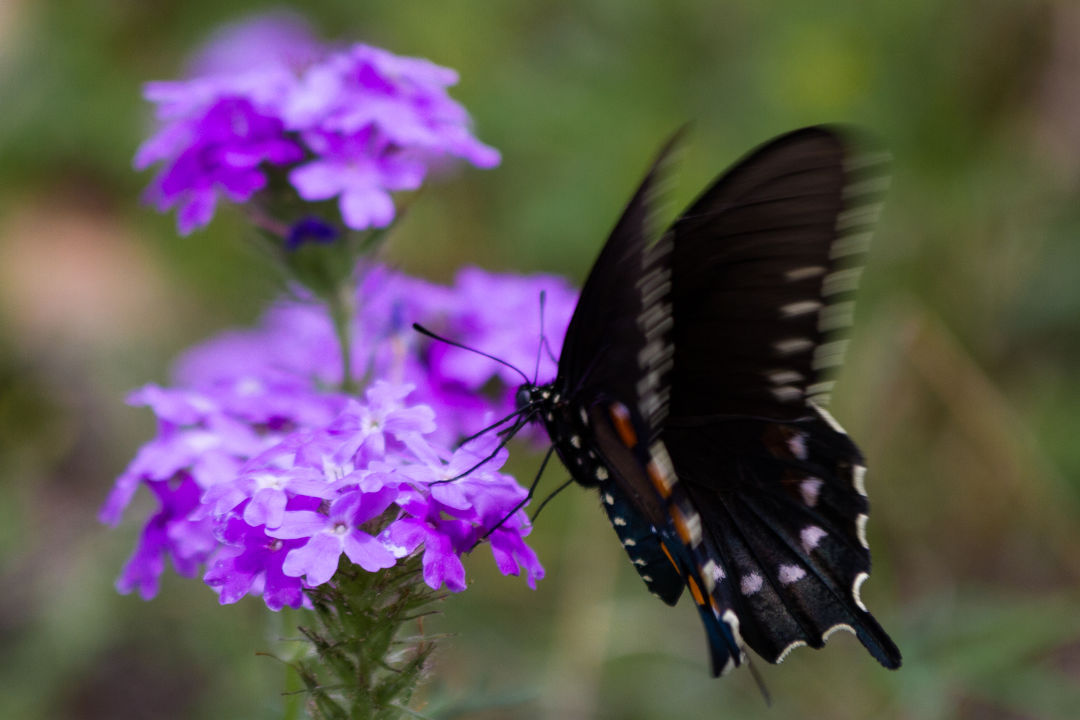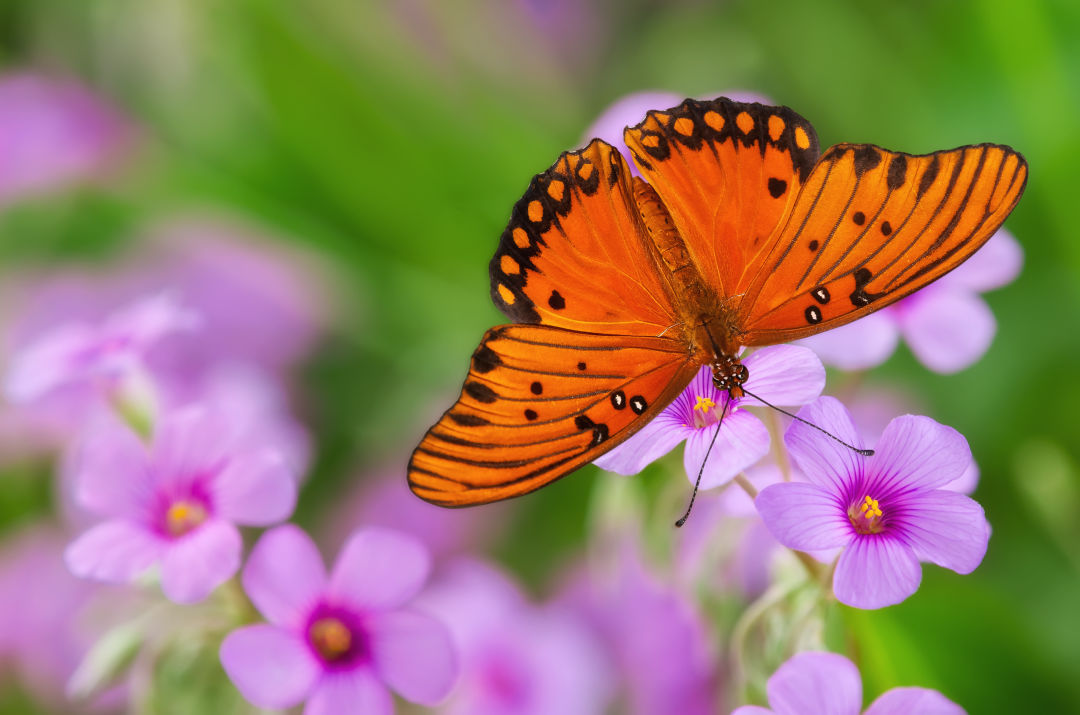You Can Help Monitor the Butterfly Population in Houston

A swallowtail in Texas.
Now that death’s stench has sufficiently aired itself out of HMNS’s Cockrell Butterfly Center, an entomologist at the museum, Kathryn Hokamp, is looking to air something else out and into the hands of citizen scientists.
Hokamp is the museum’s lepidopterist—or butterfly expert—and has created Texas’s first year-long butterfly monitoring network, not only because Texas is a glaring blank spot in butterfly monitoring, but also because, quite literally, everything always manages to be bigger in Texas, even the butterfly population.
With over half of the United State's 800 butterfly species residing or migrating through it, Texas carries the nation’s butterfly population more than any other state, making it crucial for conservation, Hokamp says. After meeting with the head of Illinois’s monitoring network—the nation’s largest—Hokamp established our state’s own chapter of the North American Butterfly Monitoring Network, the Texas Butterfly Monitoring Network.
“There are a lot of butterfly counts being done by the North American Butterfly Association in the state, but those are often done a few times a year instead of throughout the year,” says Hokamp. “Texas is also important because a lot of conservation efforts, nearly all butterfly conservation efforts in the U.S., go toward monarch butterflies, which of course migrate right through Texas.” There was even a 42-page document published by the Texas Parks and Wildlife Department in 2016, detailing Texas's critical conservation role. Hokamp, however, hopes to monitor much more than monarchs.
Her monitoring network records data in Houston, Austin and Dallas, and the requirements to participate are such: Walk a constant route at least nine times per year and record the butterflies you see. Hokamp also assured you don’t need any prior butterfly knowledge to participate. For example, seeing an unknown swallowtail, distinctive for their forked hindwings, is fantastic data, she adds.
When asked about the current state of butterflies, Hokamp, without hesitation, told us, “Oh, very not good!”
She points to a study by Germany-based Krefeld Entomological Society, which conducted a 27-year analysis on flying insects and their decline. From 1989 to 2016, the society found more than a 75 percent decline in flying insect biomass in protected areas in Germany. Hokamp and other entomologists have dubbed this the windshield effect, anecdotal evidence of people noticing fewer squished insects on their windshields.
“All butterflies are in a bad state," Hokamp says. "There is hope for conservation, but what they need is habitat more than anything else, and it’s especially important in Houston because it’s a sprawling concrete city. It’s a big, fragmented habitat, so there are far fewer butterflies in the Houston area than there would be even in other places in Texas just because of the amount of concrete.”
Houston’s habitat, however, isn’t the only place being fragmented in Texas. The National Butterfly Center in Mission, Texas might be cut in two by President Trump’s border wall, according to Texas Monthly. Last year following an unauthorized brush clearing, Border Patrol’s Rio Grande Valley Sector Chief Manuel Padilla showed the center’s executive director plans for the wall, which, if funded, would segment the wildlife center, increase the risk of flooding, and deplete much of the butterflies's natural habitat necessary for conservation.
However, Hokamp says even though the state of butterflies is “very not good,” butterflies will come; you just need to know how to attract them. Even in the middle of Houston, atop HMNS’s seven-story parking garage, butterflies flitter about a greenhouses filled with host plants. Other nuggets of hope include the Houston Arboretum & Nature Center’s revival and the city’s upcoming botanic garden, set to open in 2020.

The gorgeous Gulf fritillary.
If you’re looking to entice a few bright-winged creatures this summer, Hokamp recommends planting pipevine or passion flower vines to attract the pipevine swallowtail, a black-blue species with bright orange freckles; or the Gulf fritillary, a burnt orange variety. Herbs such as parsley, dill and fennel attract black swallowtails, while citrus plants attract the giant swallowtail.
Though you likely won't see many monarchs this summer—the beloved butterflies, like birds, mostly migrate through our state in the spring and fall in huge swaths—Hokamp says to look for more Gulf fritillaries and sulphers, petite butterflies known for their bright yellow hue, later this summer.
“We’re hoping this project goes on for many, many years,” Hokamp says. “It has to be a long-term project to get real numbers, and we’re hoping that helps with conservation plans.”




